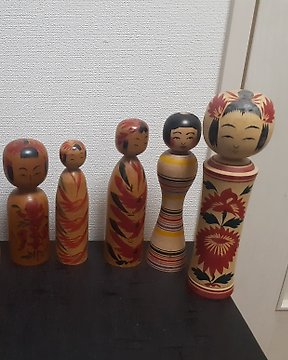soddisfatta del mio ordine, spedizione rapida e accurata, grazie
查看翻譯'True View of the Foreign Buildings along the Kaigandôri Seen from the Yokohama Wharves' - Utagawa Hiroshige III (1842–1894) - 日本 - 明治時期(1868-1912)
編號 87909317




Original woodblock print - Paper - Utagawa Hiroshige III (1842–1894) -'Yokohama Hatoba Kaigandōri ijin'yakata no shin zu 横浜波止場海岸通異人館之真図(True View of Foreign Buildings along Kaigandōri as Seen from the Yokohama Wharves) - Japan - 1875 (meiji 7 period)
This Ukiyoe series drawn famous places in Tokyo.
This Ukiyo-e has many series.
Reasonable condition, bottom and right margins trimmed, holes on the margins, color 'bleeding' around the signature cartouche
memo
Utagawa Hiroshige III is known for drawing “Tokaido Gojusantsugi,” as well as Utagawa Hiroshige and Utagawa Hiroshige II.
Reflecting the advent of the Meiji period, however, he drew many products of civilization and enlightenment, such as steam locomotive, Western-style architecture and Western clothesHiroshige’s name is known to the world for drawing “Tokaido Gosho Sanji” as well as the first and second generations, but he created the work reflecting the Meiji era. He actively portrays the state-of-the-art technology of the time, including steam locomotives, steamships, railroads, Western-style architecture, clothes, mage-cut people, and rickshaws. Among them, the appearance of the railway connecting Shimbashi and Yokohama, which opened in 1872, caused a culture shock because it was said that iron wheels would run on steam at that time.The nishiki-e paintings drawn by ukiyo-e artists from locomotives and steamships that they had never seen before became news all over the country. Hiroshige III drew this kind of civilization with a lot of imported aniline red, which is a deep red color, so his kaika-e was called “Aka-e”. It can be said that he was a perfect reflection of the restless and noisy world of the time. The kaika-e of Hiroshige III has nothing to do with the lyricism of Hiroshige III, but it conveys the color of the early Meiji era. He also draws many such kaika-e paintings, as well as paintings of scenic spots in Tokyo and products of various countries.
This Ukiyo-e has many series.
Original woodblock print - Paper - Utagawa Hiroshige III (1842–1894) -'Yokohama Hatoba Kaigandōri ijin'yakata no shin zu 横浜波止場海岸通異人館之真図(True View of Foreign Buildings along Kaigandōri as Seen from the Yokohama Wharves) - Japan - 1875 (meiji 7 period)
This Ukiyoe series drawn famous places in Tokyo.
This Ukiyo-e has many series.
Reasonable condition, bottom and right margins trimmed, holes on the margins, color 'bleeding' around the signature cartouche
memo
Utagawa Hiroshige III is known for drawing “Tokaido Gojusantsugi,” as well as Utagawa Hiroshige and Utagawa Hiroshige II.
Reflecting the advent of the Meiji period, however, he drew many products of civilization and enlightenment, such as steam locomotive, Western-style architecture and Western clothesHiroshige’s name is known to the world for drawing “Tokaido Gosho Sanji” as well as the first and second generations, but he created the work reflecting the Meiji era. He actively portrays the state-of-the-art technology of the time, including steam locomotives, steamships, railroads, Western-style architecture, clothes, mage-cut people, and rickshaws. Among them, the appearance of the railway connecting Shimbashi and Yokohama, which opened in 1872, caused a culture shock because it was said that iron wheels would run on steam at that time.The nishiki-e paintings drawn by ukiyo-e artists from locomotives and steamships that they had never seen before became news all over the country. Hiroshige III drew this kind of civilization with a lot of imported aniline red, which is a deep red color, so his kaika-e was called “Aka-e”. It can be said that he was a perfect reflection of the restless and noisy world of the time. The kaika-e of Hiroshige III has nothing to do with the lyricism of Hiroshige III, but it conveys the color of the early Meiji era. He also draws many such kaika-e paintings, as well as paintings of scenic spots in Tokyo and products of various countries.
This Ukiyo-e has many series.
- 214
- 4
- 4
Oggetto bellissimo. Ottimo imballaggio. Tutto perfetto. Venditore top.
查看翻譯Very safe packaging. All good.
查看翻譯Good ! Really good ! !
查看翻譯Perfect again. Many thanks from Germany 🇩🇪.
查看翻譯excellent many thanks
查看翻譯Perfect!
查看翻譯Thank you
查看翻譯Good impression
查看翻譯Again anything really perfect!
查看翻譯Fine woodprint (''estampe''), safe packaging, quick delivery. Wonderfull ! Many thanks Claval, France (EU)
查看翻譯FAST AND SAFE DELIVERY,pRINT CORRESPONDING TO THE DESCRIPTION
查看翻譯Top! Jederzeit gerne wieder!
查看翻譯Je suis satisfait de mon achat ! Sakaman est un vendeur de confiance, merci beaucoup!
查看翻譯Parfait, merci
查看翻譯Nice woodcuts. Professional service.
查看翻譯Nice woodcut. Professional service.
查看翻譯de prent is snel verzonden vanuit Japan en was daarom ook snel in Nederland; dank daarvoor!
查看翻譯Nice prints, safe delivery !
查看翻譯perfect
查看翻譯again very happy
查看翻譯perfect
查看翻譯IT ARRIVED PROMPTLY ANWAS SUPERBLY PACKED. tHANKS
查看翻譯As always with this Seller, my purchased item - a ukiyoe print - arrived safely, in a condition as described. Great service! Thank you.
查看翻譯Seller claimed item was “already sold elsewhere“ after I won and paid the auction. I offered to find a solution in sending me an alternative item but got no response. Extremely disappointed
查看翻譯- 214
- 4
- 4
soddisfatta del mio ordine, spedizione rapida e accurata, grazie
查看翻譯








